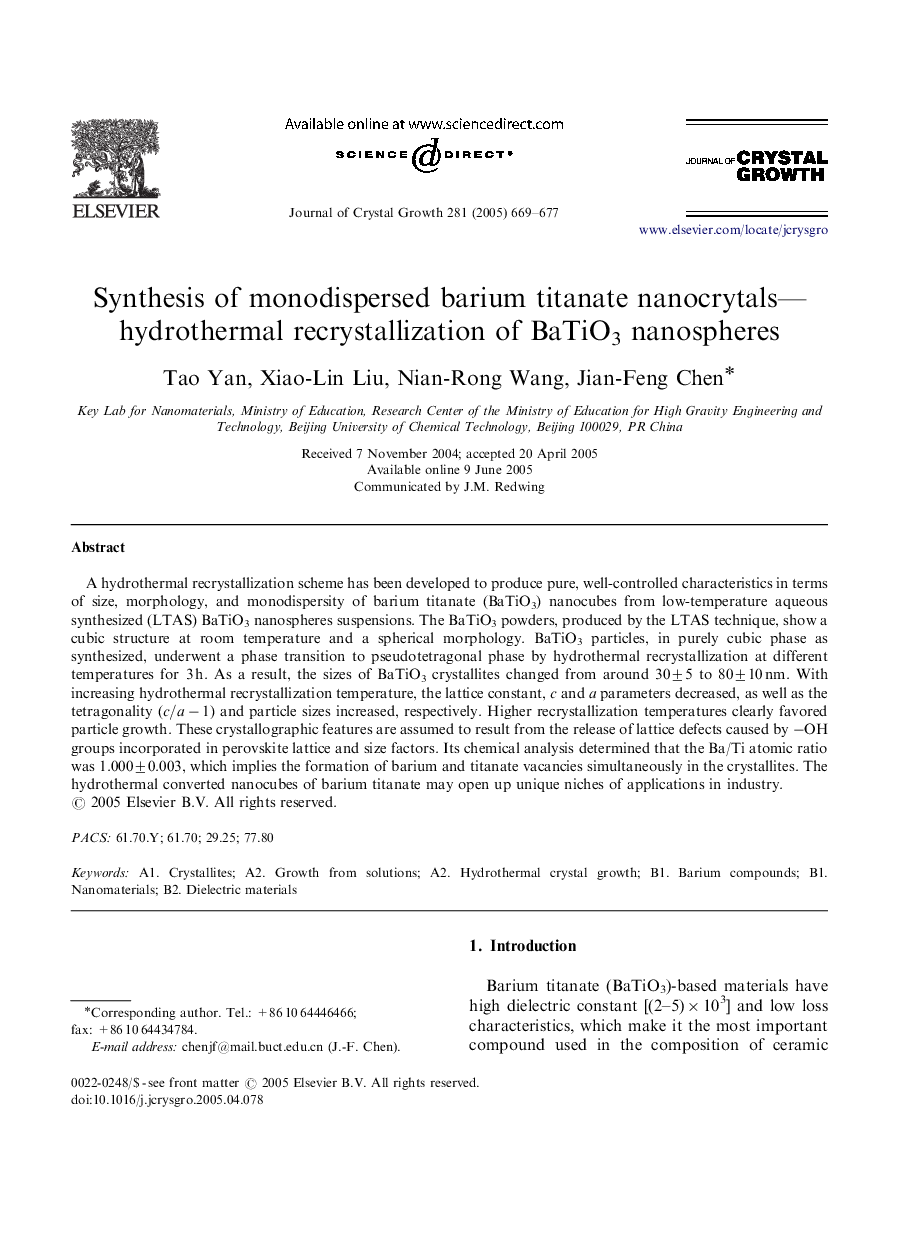| Article ID | Journal | Published Year | Pages | File Type |
|---|---|---|---|---|
| 9829602 | Journal of Crystal Growth | 2005 | 9 Pages |
Abstract
A hydrothermal recrystallization scheme has been developed to produce pure, well-controlled characteristics in terms of size, morphology, and monodispersity of barium titanate (BaTiO3) nanocubes from low-temperature aqueous synthesized (LTAS) BaTiO3 nanospheres suspensions. The BaTiO3 powders, produced by the LTAS technique, show a cubic structure at room temperature and a spherical morphology. BaTiO3 particles, in purely cubic phase as synthesized, underwent a phase transition to pseudotetragonal phase by hydrothermal recrystallization at different temperatures for 3 h. As a result, the sizes of BaTiO3 crystallites changed from around 30±5 to 80±10 nm. With increasing hydrothermal recrystallization temperature, the lattice constant, c and a parameters decreased, as well as the tetragonality (c/a-1) and particle sizes increased, respectively. Higher recrystallization temperatures clearly favored particle growth. These crystallographic features are assumed to result from the release of lattice defects caused by âOH groups incorporated in perovskite lattice and size factors. Its chemical analysis determined that the Ba/Ti atomic ratio was 1.000±0.003, which implies the formation of barium and titanate vacancies simultaneously in the crystallites. The hydrothermal converted nanocubes of barium titanate may open up unique niches of applications in industry.
Keywords
Related Topics
Physical Sciences and Engineering
Physics and Astronomy
Condensed Matter Physics
Authors
Tao Yan, Xiao-Lin Liu, Nian-Rong Wang, Jian-Feng Chen,
